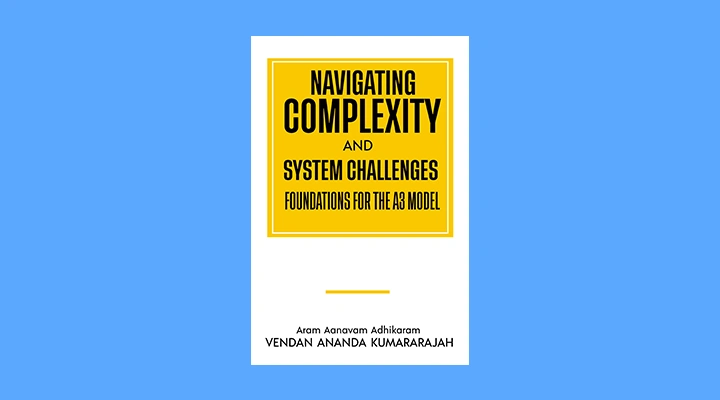How healthcare systems can boost sustainability

John E. Kaye
- Published
- Home, Lifestyle, Sustainability

According to the NCSH, establishing a culture of sustainability and eco-efficiency
across global healthcare infrastructure is vital in the fight against climate change
Daily life has been disrupted by the Covid-19 pandemic in so many ways. Since the outbreak, individuals and organisations have had to adapt decisions, routines, and relationships in a rapidly changing environment. Face coverings and hand sanitising gels have become essential everyday possessions, healthcare systems are squeezed to capacity.
But it’s not just Covid applying the pressure, there is an even bigger threat: climate change. Rising temperatures and radically changing weather systems mean we must adapt, and despite heatwaves and floods, high quality healthcare still needs to be delivered.
Sustainable healthcare and the UNited nations’ SDGs
- SDG 3: Good health and well-being
- SDG 6: Clean water and sanitation
- SDG 9: Industry, innovation and infrastructure
- SDG 11: Sustainable cities and communities
- SDG 17: Partnerships for the goals
Yet the tools for managing surrounding fast-paced changes remain predominantly reactive. Rather than building long-term capacity, systems are often responding to changes after the event. Just as several healthcare facilities encountered a lack of material and energy supplies in early 2020, climate disasters tend to be handled through emergency kits rather than emissions cuts.
Simply reacting to disruption is unlikely to be a sustainable strategy moving forward. The World Health Organization (WHO) has made the daunting estimation that 5-15% of global carbon emissions derive from health services in developed countries. Super pollutant greenhouse gases like anaesthetic gases are also escaping the walls of the hospital, affecting life outside.
These elements show the need to reframe actions and decisions. Boosting sustainable healthcare – healthcare that actively works to minimise and prevent environmental effects, after an individual has fallen ill – means taking a holistic perspective. Actions and decisions must be placed in a larger context to allow for new, innovative relations.

The Grønnköpingkið digital hospital showcases Nordic green healthcare solutions to the world
Achieving these aims has been the work of the Nordic Center for Sustainable Healthcare (NCSH) and its international network since 2015. The NCSH constructs partnerships across borders and challenges the idea of hospitals and other healthcare facilities as being isolated entities. This is a proactive strategy to help fulfil the UN’s Sustainable Development Goals (SDGs) through strong collaborative efforts – all boost sustainable development through sustainable healthcare.
Sharing best practices and green solutions
To achieve such an objective, it is necessary to start with existing experiences across the globe. In a European context, creating robust healthcare systems, resilient to disruption, is already part of the wider narrative. This is an active part of the European Green Deal, which represents a regional incentive for strong public procurement for green investments.
Today, a new business area is emerging. Companies are developing a wide range of products and services that improve the sustainability performance of hospitals and other healthcare facilities. Everything from modular natural refrigerants and closed waste systems to more sustainable furniture are being installed and developed for the market.
Among many global innovations, some examples of how to construct sustainable and preventative healthcare can be found in the Nordic countries (Sweden, Norway, Denmark, Finland, and Iceland). These nations share a long history of caring for nature and people. Not only were their populations at an early stage – as early as 1863 in Sweden – covered by publicly financed comprehensive healthcare, but environmental regulations were not far behind. Some regulations were established by the start of the twentieth century.
Nordic and European expertise can offer best practices and green solutions, which can be implemented anywhere in the world. The mission is circular: looking at the entire life cycle, inside as well as outside of hospital walls – this develops potential for innovation when translated into learning processes. Creating healthcare systems that reduce healthcare’s impact on the environment – and manage risks originating from the same environment – is a scalable vision. It has the capability to enrich healthcare systems as well as societies worldwide.
The above components give sustainable healthcare proactive potential. Sustainable healthcare can be the central facilitator of sustainable development by sharing solutions between different countries. For that objective to succeed, one common denominator is essential: cross-sectorial and multi-stakeholder collaboration.

Robustness in a changing environment
When faced by a disturbance, the ability to bounce back means higher quality health for people and the planet – a goal outlined in the COP26 Health Programme, seeking to develop low carbon care and the inclusion of health as an instrument for achieving the UN’s SDGs.
NCSH’s collaborative efforts is one way of making healthcare systems more resilient. Collaboration through a dynamic network of stakeholders helps achieve robustness. The network raises the status and awareness of sustainable healthcare, boosts innovation and investments, and helps share world-class solutions. Taking a proactive approach with resilient products, procurement and people means healthcare facilities can build the capacity to deliver on their social responsibility.
The world’s greenest hospital
Partnerships grown under these conditions offer the key to sustainable healthcare. They allow for green solutions based on stakeholder needs. From NCSH’s expertise and network, the demand for these partnerships is already high. Innovative policy instruments and projects need to meet this demand by promoting accessibility.
One how-to example is Grønnköpingkið: a digital hospital showcasing Nordic sustainable healthcare solutions (see link at end). Initiated and managed by NCSH, the hospital exists on a platform accessible around the world. This enables healthcare decision-makers to find the greenest products and services for their hospitals. As opposed to reinventing the wheel, the solutions are all already on the market, installed, tested and ready to be used internationally.
Just like Grønnköpingkið, all hospitals are part of larger systems. Faced by the likelihood of more pandemics and escalating climate disasters, collaborating across boundaries and borders is vital. Sustainable healthcare offers a model for withstanding massive disruptions in societies worldwide, meeting and preventing the crises of the future. It is at the core of sustainable development.
ABOUT THE AUTHOR
Representing the NCSH in this article are: Felicia Hedetoft (Communications Coordinator). Diego Angelino (International Project Coordinator). Daniel Eriksson (Founder/CEO). Hjalmar Bardh Olsson (Senior Sustainability Advisor).
Further information
Nordic Centre For Sustainable Healthcare | World’s Greenest Hospital
Sign up to The European Newsletter
RECENT ARTICLES
-
 NOMOS Glashütte named Germany’s best sports watch brand 2025
NOMOS Glashütte named Germany’s best sports watch brand 2025 -
 Stars, supermoons and shooting fireballs: why November’s sky is unmissable
Stars, supermoons and shooting fireballs: why November’s sky is unmissable -
 “Derbyshire is both a treasure and a responsibility” — William Glossop on the New Heritage Shell Guide
“Derbyshire is both a treasure and a responsibility” — William Glossop on the New Heritage Shell Guide -
 Inside the Maldives’ most exclusive getaway
Inside the Maldives’ most exclusive getaway -
 Tripadvisor says this is one of the best hotels on Earth — we went to see for ourselves
Tripadvisor says this is one of the best hotels on Earth — we went to see for ourselves -
 Britain’s most storied guidebook series returns with a Derbyshire volume that mixes celebration with stark warnings of industrial devastation
Britain’s most storied guidebook series returns with a Derbyshire volume that mixes celebration with stark warnings of industrial devastation -
 Michelin shortlists Croatia’s Villa Nai 3.3 as one of the world’s best-designed hotels
Michelin shortlists Croatia’s Villa Nai 3.3 as one of the world’s best-designed hotels -
 Drive your own safari: why Kruger is Africa’s most accessible wildlife park
Drive your own safari: why Kruger is Africa’s most accessible wildlife park -
 Oggy Boytchev on Sardinia, an island of contrasts
Oggy Boytchev on Sardinia, an island of contrasts -
 At the edge of Europe. A cruise gateway on the Russian frontier
At the edge of Europe. A cruise gateway on the Russian frontier -
 The European Reads: What a 2,000-year-old philosophy can teach us about power
The European Reads: What a 2,000-year-old philosophy can teach us about power -
 Bicester Motion October 2025 Scramble: 2025’s final ode to British motoring culture
Bicester Motion October 2025 Scramble: 2025’s final ode to British motoring culture -
 Glastonbury and Coachella set the stage for $400bn music tourism growth
Glastonbury and Coachella set the stage for $400bn music tourism growth -
 Wartski at 160: Fabergé dealer and royal jeweller stages landmark brooch exhibition
Wartski at 160: Fabergé dealer and royal jeweller stages landmark brooch exhibition -
 Beyond ecology: Pajot Yachts and the art of eco-integration
Beyond ecology: Pajot Yachts and the art of eco-integration -
 Diving into… Haute-Savoie, France
Diving into… Haute-Savoie, France -
 The October night sky and the return of Orion the Hunter
The October night sky and the return of Orion the Hunter -
 On the trail of Captain Corelli: discovering Paros and Antiparos on two wheels
On the trail of Captain Corelli: discovering Paros and Antiparos on two wheels -
 Fancy a sauna on prescription? Sweden becomes the first country doctors can recommend for your health
Fancy a sauna on prescription? Sweden becomes the first country doctors can recommend for your health -
 The 'most famous BMW ever', Warhol’s Pop-Art Racer, gets historic honour
The 'most famous BMW ever', Warhol’s Pop-Art Racer, gets historic honour -
 We took our dogs on a motorhome city break to Cambridge – here’s what happened
We took our dogs on a motorhome city break to Cambridge – here’s what happened -
 Jackie Stewart leads tributes as motorsport legends converge on Goodwood Revival
Jackie Stewart leads tributes as motorsport legends converge on Goodwood Revival -
 The European Reads: two new guides for adults living with late autism and ADHD diagnosis
The European Reads: two new guides for adults living with late autism and ADHD diagnosis -
 The five superyacht shows that matter most
The five superyacht shows that matter most -
 A world in gold: Andersen Genève launches the Communication 45
A world in gold: Andersen Genève launches the Communication 45



























